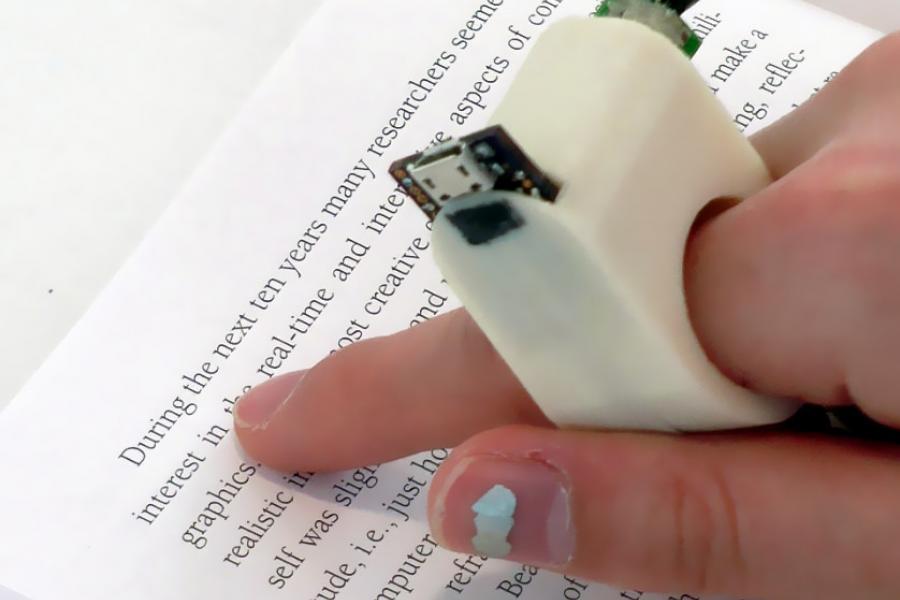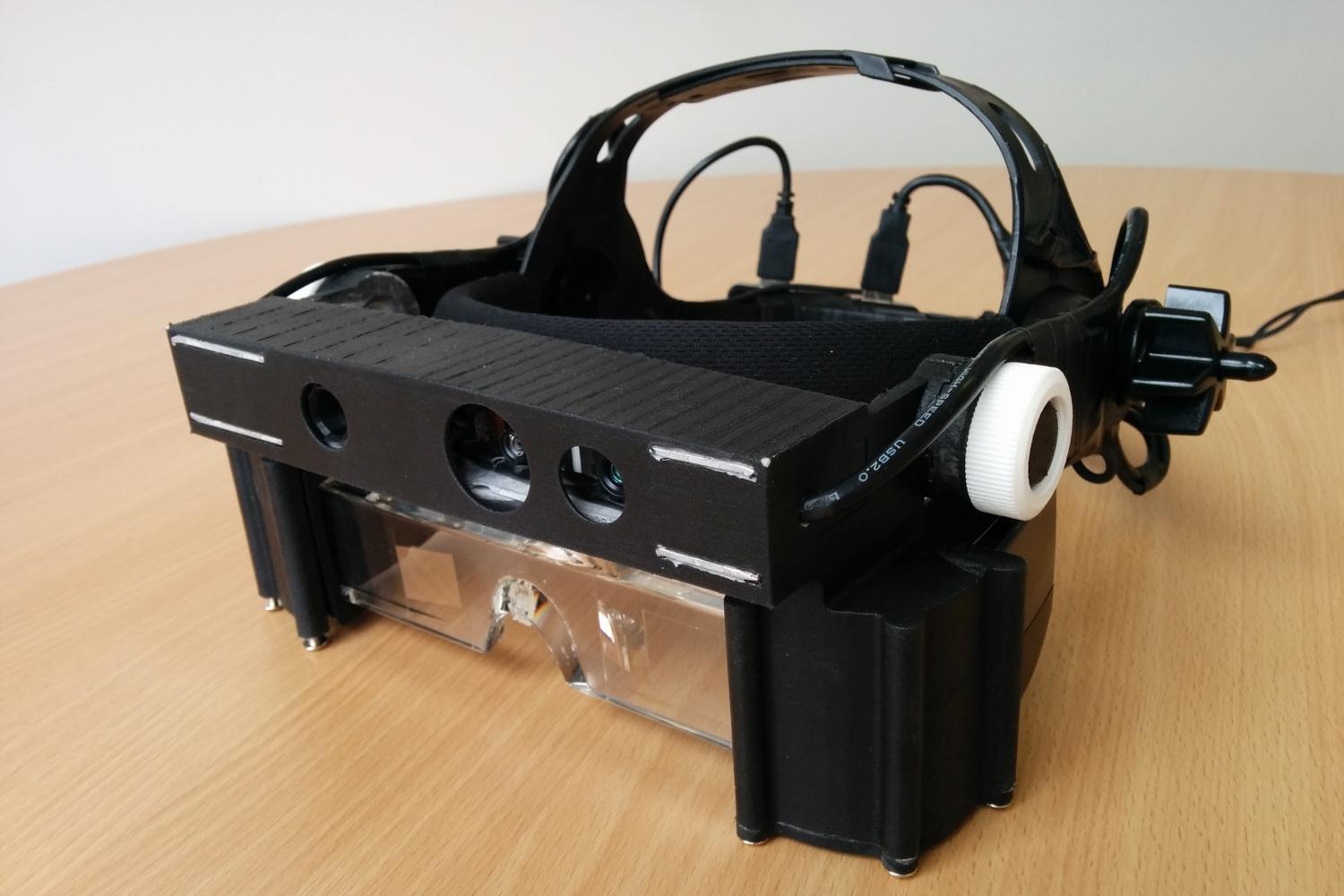Voice-Activated Assistive Devices: Simplifying Regular Tasks
Voice-Activated Assistive Devices: Simplifying Regular Tasks
Blog Article
Discover Innovative Tools Made for the Aesthetically Impaired
The development of innovative devices for the aesthetically impaired represents a substantial improvement in ease of access and freedom. Technologies such as smart glasses with AI abilities and mobile applications created to offer auditory summaries are improving day-to-day experiences for customers. In addition, wearable devices that utilize haptic comments improve ecological recognition, while modern-day Braille innovations provide new methods to engage with message. As these tools continue to progress, their influence on the lives of those with aesthetic problems raises vital inquiries regarding the future of inclusivity and autonomy in different aspects of life. What lies ahead in this technological landscape?
Smart Glasses for Navigating

Smart glasses made for navigating are transforming the way aesthetically impaired people connect with their atmosphere. These advanced devices use a mix of video camera technology, artificial knowledge, and auditory comments to supply real-time details regarding surroundings. By using obstacle discovery systems, smart glasses can signal customers to possible hazards, enabling much safer wheelchair in both strange and familiar settings.
The assimilation of GPS modern technology additionally enhances navigation capabilities, permitting customers to obtain acoustic instructions as they relocate. This hands-free strategy not only cultivates freedom yet additionally encourages visually damaged individuals to browse metropolitan landscapes with increased confidence. Furthermore, many wise glasses are equipped with attributes that recognize spots and road indications, providing contextual information that boosts the individual experience.
Additionally, the advancement of these tools is continually advancing, with business functioning to enhance the accuracy of item recognition and increase the array of navigational features. As smart glasses become much more easily accessible and budget-friendly, they hold the possible to substantially transform every day life for visually impaired users. Ultimately, these innovative devices stand for an essential action toward inclusivity, offering boosted flexibility and a better feeling of autonomy for people browsing the world around them.

Mobile Application for Daily Living
How can mobile applications boost the daily lives of aesthetically impaired people? Mobile applications are transforming the method aesthetically damaged users browse their environments, handle daily jobs, and access information. These applications provide crucial assistance via different performances, promoting freedom and boosting lifestyle.
Numerous cutting-edge mobile apps are developed particularly for everyday living. Applications like Be My Eyes connect aesthetically damaged individuals with sighted volunteers by means of video clip calls, permitting them to get real-time support with jobs such as reviewing tags or browsing unknown spaces. In A Similar Way, Seeing AI, created by Microsoft, utilizes synthetic intelligence to describe environments, read message, and determine things, successfully transforming a smartphone into an effective tool for everyday aid.
Furthermore, navigation apps customized for the visually damaged, such as Aira and BlindSquare, offer audio-based directions and ecological info, making it possible for users to traverse their environments securely and with confidence. Beyond navigation and immediate help, mobile applications also support company and job management, with attributes that aid users establish tips, develop order of business, and track appointments. In recap, mobile applications work as vital sources, empowering aesthetically impaired individuals to lead even more independent and meeting lives.
Wearable Technologies for Aid
Empowerment with technology is progressively noticeable in the realm of wearable gadgets designed to help aesthetically impaired individuals. These cutting-edge tools integrate seamlessly into day-to-day live, enhancing navigating and offering essential comments to customers. As an example, wise glasses outfitted with cameras can review and recognize faces text out loud, permitting users to communicate even more with confidence in professional and social settings.
One more noteworthy development is using haptic comments systems in wearable gadgets. These systems use resonances or various other responsive signals to share details concerning the user's environment, such as obstacles or changes in terrain, enhancing wheelchair and security. Wearable modern technologies also consist of wristbands that link to smart devices, informing individuals to notices with subtle vibrations, thus boosting connectivity without reliance cool reading glasses on aesthetic signs.
As these technologies remain to evolve, they are not only improving independence for aesthetically damaged people however also fostering a better feeling of inclusion in culture. By bridging the space in between difficulties faced in everyday living and the possibility for freedom, wearable innovations function as crucial devices in the quest for equal rights and empowerment for those with aesthetic impairments.
Sound Summary Tools
Sound description devices play an essential duty in improving access for visually damaged people, offering them with the capacity to engage with visual media. Wearable technology for low vision. These devices offer narrated summaries of crucial aesthetic aspects in films, tv programs, and live performances, guaranteeing that customers can totally comprehend the context and feelings communicated through visuals
Audio summary can be incorporated right into various platforms, including streaming solutions, movie theater testings, and live cinema. Numerous preferred streaming services now consist of audio summary as an availability attribute, allowing audiences to choose it quickly. In enhancement to conventional media, specialized apps additionally exist, providing audio descriptions for art exhibits, galleries, and various other cultural events.
The efficiency of audio summary pivots on the ability of the storytellers, that should communicate aesthetic information succinctly without diminishing the initial audio. Advancements in this area are also leading the way for even more personalized experiences, where individuals can readjust the degree of detail and pacing according to their preferences.
Braille Innovations and Gadgets
Braille devices and advancements have actually dramatically transformed the way visually impaired individuals engage with message and details. Modern advancements have led to the advancement of functional devices that boost proficiency and independence amongst users.
Additionally, mobile Braille notetakers integrate typical Braille input with modern-day performances, assisting in note-taking, organizing, and file editing on the go. Mobility aids for visually impaired users. These compact devices usually include text-to-speech abilities, bridging the void in between Braille and acoustic info
Furthermore, innovative Braille printers have actually arised, enabling users to generate Braille tags, papers, and academic materials successfully. This access promotes greater involvement in academic and professional environments, inevitably advertising inclusivity.
Moreover, research right into wise Braille modern technologies remains to expand. Tools that integrate synthetic knowledge are being checked out to supply real-time navigation assistance and contextual details, boosting the individual experience in diverse setups. Overall, these innovations show a commitment to equipping aesthetically damaged individuals via innovation, ensuring they can quickly access and engage with the globe around them.

Conclusion
The development of cutting-edge tools for the aesthetically damaged considerably boosts self-reliance and top quality of life. These innovations not just foster greater incorporation but additionally promote freedom in day-to-day activities, inevitably contributing to a much more equitable and obtainable society for visually damaged people.
As smart glasses end up being more available and economical, they hold the possible to considerably transform day-to-day life for aesthetically impaired users. Mobile apps are changing the way visually impaired individuals browse their settings, manage daily tasks, and accessibility information. Apps like Be My Eyes link aesthetically damaged customers with sighted volunteers via video calls, enabling them to obtain real-time support with jobs such as reviewing labels or navigating unknown areas.In addition, navigating applications customized for the visually damaged, such as Aira and BlindSquare, offer audio-based instructions he has a good point and ecological from this source details, making it possible for users to traverse their surroundings safely and confidently.The improvement of ingenious tools for the visually damaged dramatically boosts independence and quality of life.
Report this page